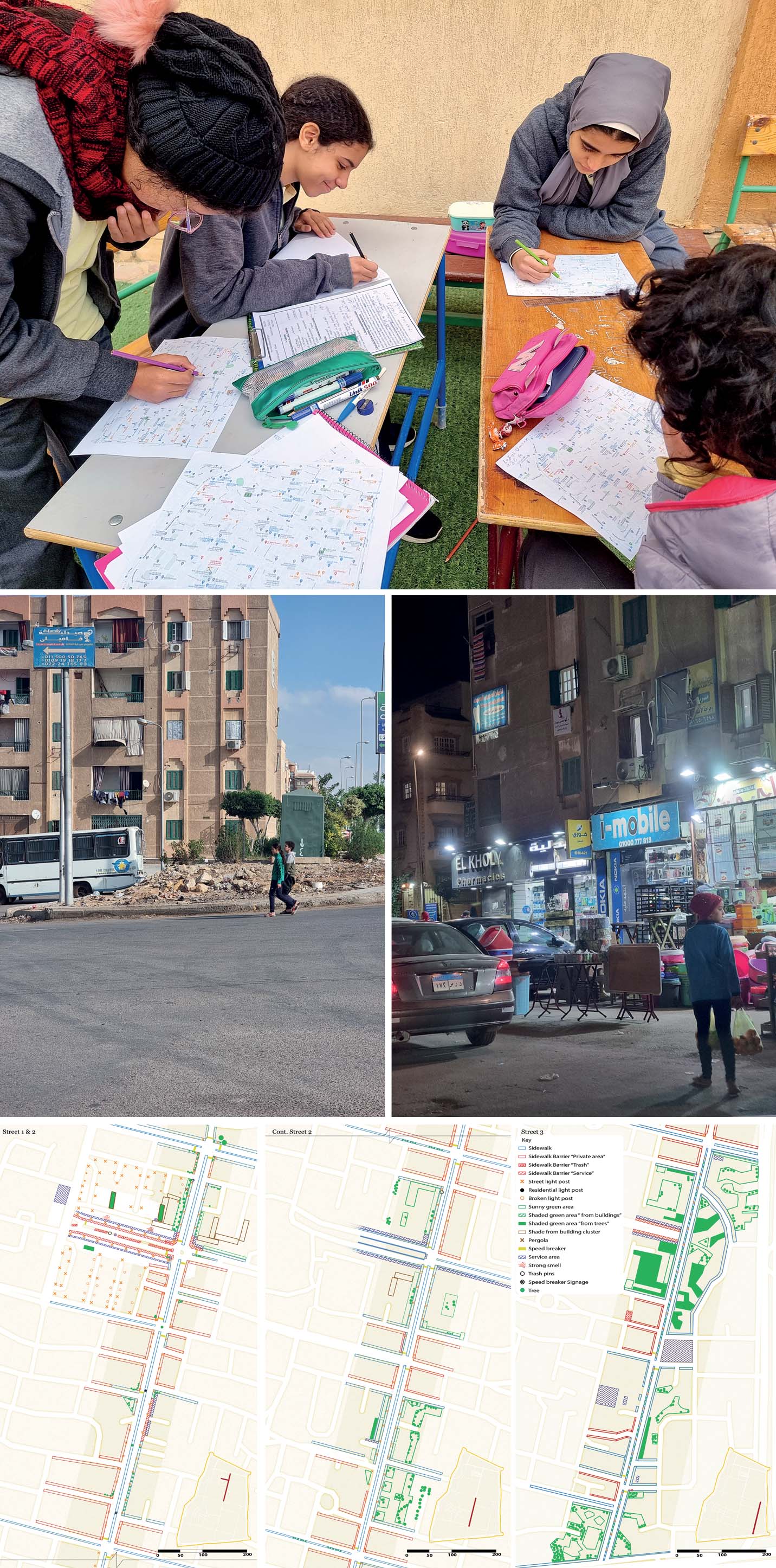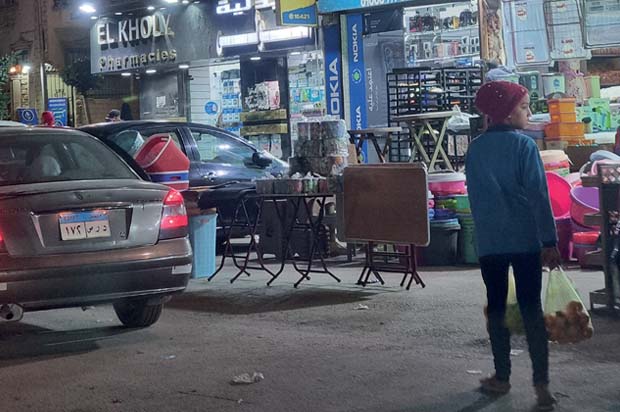
JOINT 3rd PRIZE DAIDA 2023
In developing countries, children face various socio-spatial problems in their neighbourhoods that influence their physical and mental well-being. Our built environment is the giant cloche containing tangible and intangible means that affect the children’s freedom of movement within the streets, influencing their overall development. The physical urban changes of a city are developed by adults for their own needs to meet their daily demands. The advantages of these urban changes could be lost on children; however, the disadvantages might significantly influence their mental, psychological and physical health. These disadvantages include the decline in children’s independent modes of transportation, such as walking and cycling to nearby destinations.
Children exploring public areas independently allows them to build confidence in their social abilities, relationships with people and physical environment. Studies show that children in developing countries face physical and social constraints that hold them back from moving freely within an acceptable range, according to the child’s age, in their communities. To increase the children’s independent mobility (CIM) frequency to reach an acceptable rate for children to develop in a normal manner, the research focuses on identifying the impact rate of each physical and social aspect within the environment that can influence CIM. Hence, the research studies the physical characteristics of streets and considers demographics and socio-economic variables that could influence CIM.

Middle, Bottom Left & Right: Observations and analysis of the streets most used by children independently in the area of the study
Scope of Study
This research focuses on Egypt’s new cities that are built with modern urban strategies to attract residents away from the centre and promote a better quality of life. It concentrates on mid-childhood children, ages 7 to 13 years old within low- and mid-income families, as CIM is cited to be peripheral in high-income families. According to numerous literature studies, that is the age range for children to begin exploring their surroundings in pursuit of education and experience independently. The research objectives are to investigate the quality of the streets used by children independently, categorise the streets’ physical characteristics according to their influence and explore the intangible factors that can influence the street quality for children.
Children exploring public areas independently allows them to build confidence in their social abilities, relationships with people and physical environment
Methodology
Accordingly, the research methodology depends on primary qualitative and quantitative data distributed between two phases to measure the CIM indicators. The first phase is concerned with the physical and social factors of the residential area, which were implemented through workshops and questionnaires. The first workshop is to explore the children’s perception of their neighbourhood through a drawing that reflects how they see their journeys in the streets. The second is to draw their journey paths across the streets on a map of the case study area to identify the streets most used by children independently. Two questionnaires were distributed, one for children and the other for their parents, to confirm the data collected from the children. Both surveys adopted Hillman’s questionnaire to examine CIM indicators and the children’s travel patterns. They also included the ‘Place Standard Tool’ to investigate the children and their parents’ overall satisfaction of their neighbourhood.
The empirical study started with retrieving the list of New Cairo’s schools from the New Cairo Educational Administration with the authorities’ permission and the acceptance of the Central Agency for Public Mobilisation and Statistics on the distributed questionnaires. According to the list, only three schools were suitable for the study. Fifty-six school children from the study area, ages 7 to 14 (31 girls and 25 boys), participated in this study.
The second phase is divided into two parts. The first is to observe and evaluate the streets’ physical characteristics, via test walks and photo documentation, on weekdays and weekends at different times of the day. The second is to analyse the physical characteristics of the selected streets that have the most influence on children’s mobility.

Bottom Left & Right: Intervention 2: Adjusting unused green-spaces to a free neighbourhood playground
The Impact of Street Characteristics on CIM
The results of both phases present the high impact of the parents’ perception of their neighbourhood design on CIM frequency according to age and gender. As for the CIM frequency, more than half the participants were below the acceptable range. For instance, the parents who stated, “My child is still too young to walk alone”, two-thirds of them have their children’s school within a walkable or cycling range of a maximum of 400 metres. However, they still consider their children, ages 9-13, too young to travel this distance independently. Sidewalk barriers like dark spots, stray dogs, vacant streets and no pedestrian crossing ways negatively affected the overall image of the community for the parents. The results also exhibit the power of the ‘Eyes on the Streets’ concept that resulted in higher children density on streets that lack appropriate characteristics for children’s mobility. Moreover, it was mentioned that the open green spaces within the neighbourhood are not utilised to serve the children’s needs.
Identifying these tangible and intangible obstacles and the parents’ recommendations can initiate minor changes in the selected streets to improve the quality of the children’s journeys. It can increase the parents’ feeling of safety to allow their children (both genders) to move independently. This allows children to freely and safely experience their neighbourhood and develop their sense of awareness and spatial relations.
The research methodology depends on primary qualitative and quantitative data distributed between two phases to measure the CIM indicators
Recommendations
In conclusion, the results of this study could have significant policy implications at the local, regional and national levels. At the local level, the findings could be used to inform the New Cairo Development Authority (DA) that promotes safe and accessible streets for children. For example, Public Services Directorates (Administrations) (SD) and Local Community Upgrading Society (CU) could use the results to identify areas used the most by children to design pedestrian crossings, interactive walkways and signs needed to improve children’s independent mobility.
At the regional level, the New Urban Communities Authority (NUCA) could use the study results to advocate for policies that prioritise walkable neighbourhoods and safe streets for children in new cities. The authority can start promoting transportation planning policies that prioritise active transportation and safe routes to school.
Finally, at the national level, the Ministry of Housing Utility and Urban Communities (MH) could use the findings to establish new policies that can match the global standards for children’s mobility. These stakeholders could use the results to develop evidence-based policies that promote safe and accessible streets for children, which in turn could lead to improved health outcomes, social cohesion and greater independence for children.
Mentors:
Prof. Dr. Mohamed Salheen – Ain Shams University and
Prof. Dr. Manal Abou El-Ela – Benha University
All photos & graphics Source: Author



Comments (0)